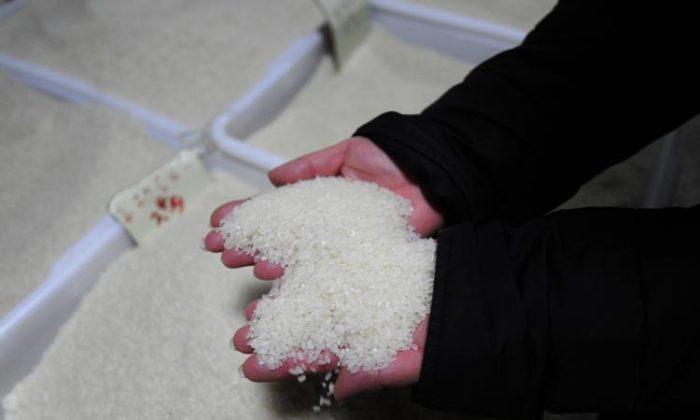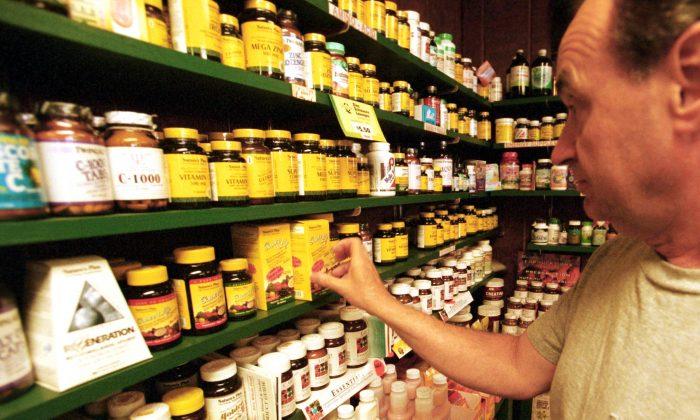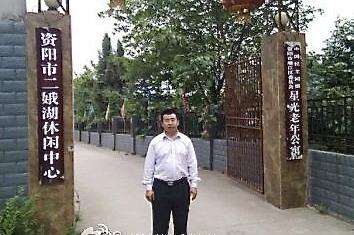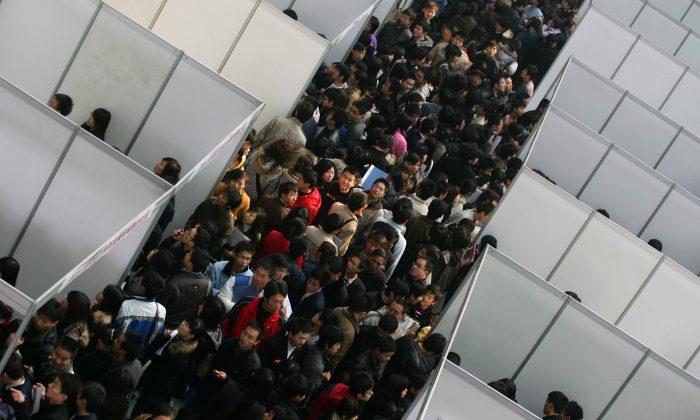For decades, high levels of cadmium and other toxic heavy metals have polluted China’s waterways. Through irrigation they have ended up in village rice paddies. Villagers complain of bone pains. Some have stopped eating their own crops, feeding it to livestock, or selling it if they can.
Huang’s misfortune started when a manganese mine opened up in the 1950’s near his village in Xiangtan County of Hunan Province, one of China’s largest rice-growing areas. The mine first covered the mountain village with dusty air, and then gradually polluted the water and soil.
Huang said the agricultural output of the village has been dropping for many years. His land now produces only half of what it used to. Land closer to the mine often produces nothing, he said.
A 2007 government report revealed that the mining operation has damaged the waterways in the area. But in 2009 the villagers found out they are in bigger trouble: their rice is polluted by cadmium, an extremely toxic heavy metal that, if ingested, may cause kidney damage, pulmonary emphysema, and bone disease—even cancer.
But the villagers chose to cover up the truth, as they have to make a living. They still sold their rice if they could, and then purchased rice for their own consumption from other regions at a higher price, the Southern Weekly’s report said. The government pays the farmers compensation, but it’s not even enough to buy new rice, Huang said.
Many villages in Hunan and other rice growing provinces also have serious heavy metal pollution of their rice crops. According to Chinese authorities, millions of acres of agricultural land have been polluted by heavy metals, and over 12 million tons of grains are contaminated. A recent report in Chinese official media further revealed that 10 percent of Chinese rice, about 20 million tons, contains excess cadmium.
People within the contaminated regions have become the first victims of heavy metal poisoning. Li Wenxiang, an 84-year-old farmer in Sidi Village, Xingping Township, Yangshuo County of Guangxi Province, told Century Weekly that a short walk leaves him in unbearable leg and foot pain. Dozens of other senior residents in the village suffer from the same affliction, Li said.
Several researchers suspect that the villagers’ leg and foot soreness is an early symptom of the “itai-itai” disease, which causes softening of bones, the report said. The disease has been observed in Japanese exposed to cadmium-contaminated rice in the 1960’s. It was so named because patients repeatedly complained, “itai, itai,” the Japanese word for “painful,” when walking.
Animals suffer as well. Hens in the village used to lay soft-shelled eggs, and osteomalacia—abnormally soft bones—was found in newborn calves, the report said.
No official diagnosis has been conducted on Sidi villagers, and the villagers are not able to prove that their suffering is caused by heavy metal contamination. But the Sidi village rice contamination is well known in the region as multiple researchers have investigated the area. Young women are reluctant to marry into the village, and the state-run grain-purchasing center will not buy the village crops, residents told Chinese media.
Poor regulation and oversight of manufacturing operations is the main cause of the widespread pollution. Many heavy metal mines hardly take any measures to treat production waste.
An arsenic mine in Yunnan Province, for example, has been reported to have left hundreds of tons of arsenic slag uncovered on unused land, allowing rain to carry the highly toxic arsenic into the underground water. The arsenic content found in crops in nearby regions is over 100 times higher than recommended safety level, a Feb. 21 China Economic Weekly report said.
The pollution has been known to farmers, researchers, and authorities for decades, but not much has been done to stop it. Because of the higher cost of “clean” rice, many farmers are forced to eat their own contaminated rice.
Pan Genxing, professor at Nanjing Agricultural University, said that on the macro level China’s current system of contracting farmland to individual households makes it extremely difficult to combine resources and make concerted efforts to handle the problem.
Chinese authorities’ policy of censoring “bad news” has also contributed to the problem by keeping many farmers unaware, and unknowingly consuming and selling the contaminated rice.
Chinese media say the recent publicity of the pollution has come about because local officials are trying to get funding for pollution treatment from the central government.
Beijing has approved a plan to reign in heavy metal pollution, but details are scarce. The Minister of Environmental Protection, Zhou Shenxian, told the Central People’s Radio that the authorities will focus on strict control and monitoring of chemical and manufacturing companies.
Critics say the authorities have done far too little.
Chinese scientist Wang Weiluo, now residing in Germany, demanded to know: “How will the Chinese government deal with the 10 percent contaminated rice already on the market?”
Alongside that is how to prevent more rice from being planted in polluted regions, the Century Weekly reported.
“As long as large amounts of heavy metal contaminated rice crops are allowed to be grown, they will end up on people’s dinner tables, and people will suffer from it,” the report said.
So far the majority of the polluted areas, including the Sidi village in Guangxi, have not been banned from farming.
The complicated purchasing channels and lack of infrastructure make it impossible for traders to determine if their grains are contaminated.
Dr. Chen Nengchang from Guangdong Institute of Eco-Environment and Soil Sciences told Southern Weekly that China simply does not have a grain testing system.
“Nobody would be able to tell if large amounts of cadmium contaminated rice are being served at people’s dinner tables,” Chen said.






Friends Read Free